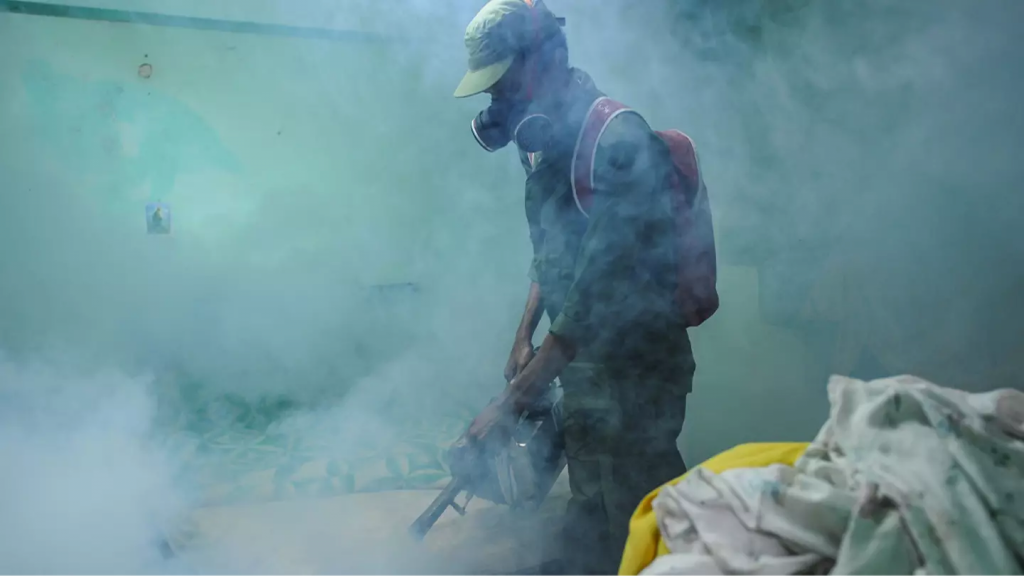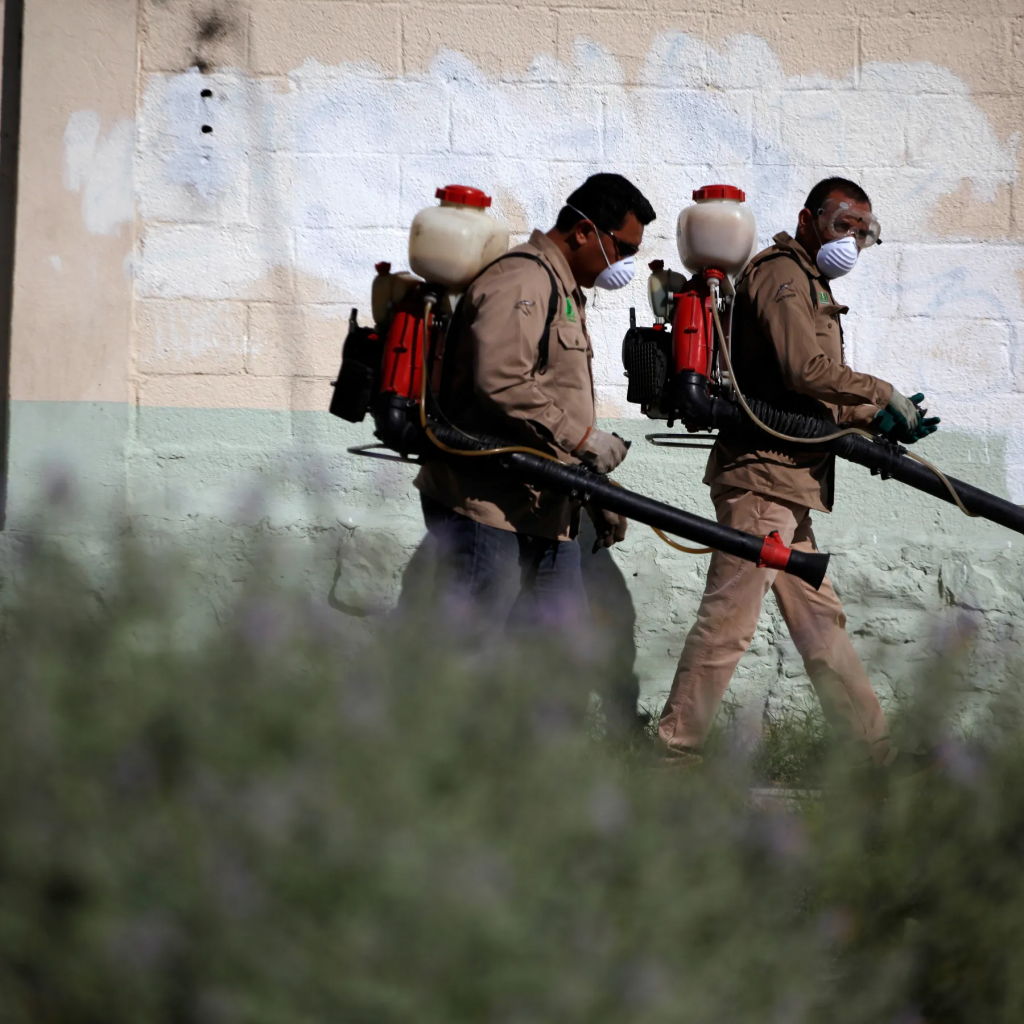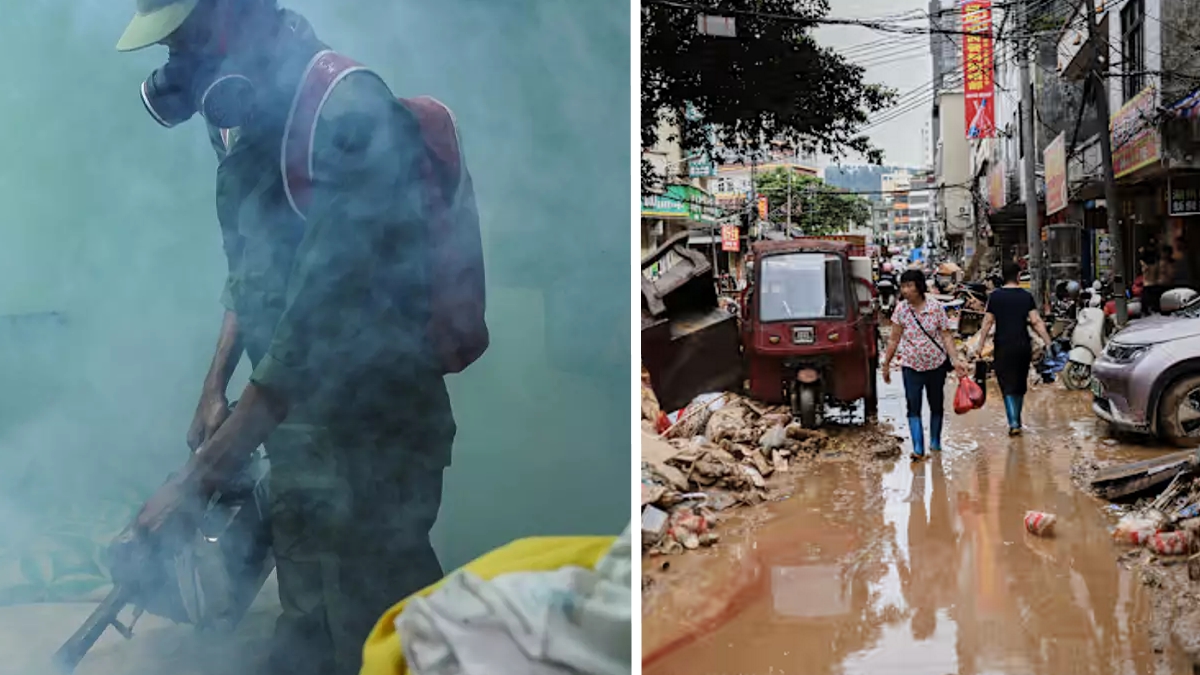Health officials in China are reintroducing certain COVID-era measures after confirming more than 7,000 cases of the mosquito-borne chikungunya virus. The move has sparked global debate over whether the world could be facing the early signs of another pandemic. One leading epidemiologist warned in an interview about emerging virus threats that while chikungunya is not as easily transmitted as COVID-19, the conditions for its spread are becoming more common. Social media exploded as news broke of China bringing back elements of its 2020 public health playbook. Video clips from a citizen journalist’s livestream appeared to show health workers in protective suits spraying streets in Guangdong province.

China bringing back COVID-style measures — this time over chikungunya. Over 7,000 cases now confirmed. #Chikungunya #China— Global Health Watch (@GlobalHealthWatch) August 8, 2025
The virus is spread by Aedes mosquitoes and causes high fever, severe joint pain, and rash. While rarely fatal, outbreaks can cripple health systems — as seen in a report on the 2014 Caribbean epidemic, which left tens of thousands unable to work for weeks. A leading infectious disease researcher told a medical research journal that climate change is expanding the range of mosquito species that can carry the virus. This, they said, increases the likelihood of bigger and more frequent outbreaks. Photos on Chinese microblogging platforms showed temperature checks returning at train stations. QR code scanning has been reintroduced at some public buildings, though no lockdowns have been announced.
Scenes from Guangzhou today — fever checkpoints are back. Officials stress it’s “precautionary,” but memories of 2020 run deep. #HealthNews— Asia Correspondent (@AsiaCorrespondent) August 8, 2025
For those who endured China’s strict lockdowns, even mild restrictions are causing unease. Posts on a popular expat forum in China show confusion over whether the measures are temporary or permanent. The World Health Organization has stopped short of declaring an emergency. However, it has sent a team to assess the outbreak, with results to be released in an upcoming WHO situation report. Experts stress chikungunya spreads only through mosquito bites, not person-to-person contact. Still, the outbreak’s speed is drawing comparisons to early COVID-19 numbers, which were quickly overtaken by reality.

First COVID, now chikungunya fears. Global health experts say “complacency is our biggest enemy.” #PublicHealth— Science Daily Update (@SciDailyUpdate) August 8, 2025
One virologist pointed to an outbreak in northern Italy in 2007 as a cautionary example. Back then, chikungunya appeared in a temperate climate for the first time, catching officials off guard. “We’re seeing the same mix of risk factors now — warmer summers, global travel, and no immunity,” they said. In China, some citizens are buying mosquito nets, repellents, and protective clothing. That follows a translated health ministry advisory warning of high mosquito activity ahead. Markets have reacted only slightly, but an economic analyst’s blog post warned of potential disruption to manufacturing hubs. On TikTok, videos tagged #ChikungunyaChina have millions of views. Creators are comparing today’s response to the early days of coronavirus — with a mix of satire and unease.
TikTok humor aside, this is serious. 7,000+ cases in weeks means the outbreak is accelerating. #GlobalHealth— Viral Trends Tracker (@ViralTrendTrack) August 8, 2025
Epidemiologists say the key to containment is mosquito control — destroying breeding grounds and targeted spraying. They point to case studies from Southeast Asia where aggressive eradication worked in weeks. Meanwhile, scientists in India are testing a new chikungunya vaccine, according to a pharmaceutical industry news site. If successful, it could be ready for high-risk areas within two years. For now, experts agree chikungunya is unlikely to cause a COVID-scale pandemic. But as one global health professor warned in a long-form piece on pandemic preparedness, “We’re creating the perfect storm for the next big one. It may not be chikungunya. But it’s coming.”








